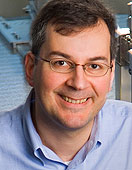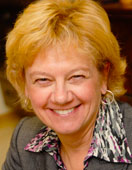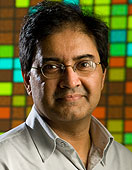News
Three elected AAAS Fellows
Three UB faculty members have been elected fellows of the American Association for the Advancement of Science (AAAS), the world’s largest general scientific society and publisher of the journal Science.
The fellows, among 702 chosen by AAAS this year, were listed in the Nov. 30 edition of Science. They are Paschalis Alexandridis, UB Distinguished Professor of Chemical and Biological Engineering, School of Engineering and Applied Sciences; Marilyn Morris, professor of pharmaceutical sciences, School of Pharmacy and Pharmaceutical Sciences; and Surajit Sen, professor of physics, College of Arts and Sciences.
“We are very proud of the individual achievements of each of these outstanding faculty members. Professors Alexandridis, Morris and Sen truly represent the excellence of UB’s faculty,” says Provost Charles Zukoski. “We are tremendously proud of their accomplishments and congratulate them on this much-deserved national recognition.”
AAAS elected Alexandridis “for fundamental discoveries on block copolymer thermodynamics, structure and dynamics; for development of functional products utilizing self-assembly methodologies; and for outstanding graduate student mentoring.”
Morris was chosen for “distinguished contributions to the field of pharmaceutical sciences in the area of membrane transport and its influence on the pharmacokinetics and pharmacodynamics of drugs.”
Sen received the distinction “for pioneering research on solitary waves and their collisions in granular media, and for sustained outstanding service and leadership in international physics.”
The fellows will be presented with a certificate and rosette pin at AAAS’s annual meeting Feb. 16 in Boston.
A chemical engineer specializing in soft materials and nanotechnology, Alexandridis has been a UB faculty member since 1997.
His research addresses interconnections between molecular interactions and supramolecular assemblies, and between structured assemblies and their properties and function. Ongoing projects focus on molecular self-assembly and colloidal directed assembly; structured ionic liquids for functional products; novel electrolytes for lithium batteries; polymer nanocomposites; nanoparticle synthesis; dissolution processing for effective biomass utilization; and dispersants for sea oil releases.
He has co-authored more than 120 journal articles and 60 conference proceedings, edited two books and given more 130 lectures worldwide. He is co-inventor of 10 patents on pharmaceutical formulations, superabsorbent polymers, and metallic and semiconductor nanomaterials. His work has been cited roughly 7,500 times.
He received the SUNY Chancellor’s Award for Excellence in Scholarship and Creative Activity (2011), American Chemical Society Jacob F. Schoellkopf Medal (2010), Bodossaki Foundation Academic Prize in Applied Science (2005), UB Exceptional Scholar Award (2002), Sigma Xi International Young Investigator Award (2002), Japan Research Institute of Material Technology Lecturer Award (2001) and National Science Foundation CAREER Award (1999).
His work has been funded by the National Science Foundation, National Institutes of Health, the National Institute of Standards and Technology, the Petroleum Research Fund, the Gulf of Mexico Research Initiative, Dow Chemical, Bausch & Lomb and Kao Corp.
A pharmaceutical scientist and the author of more than 160 peer-reviewed scientific papers, Morris joined the UB faculty in 1985.
Her research focuses on the membrane transport of drugs and the use of membrane transporters as therapeutic targets. She has published extensively on renal transport, hepatobiliary transport and hepatic clearance models, ATP-dependent binding cassette and monocarboxylate transporters.
Currently, she is examining the pharmacokinetics and pharmacodynamics of dietary components, flavonoids and organic isothiocyanates, with an emphasis on their potential for transport and metabolic drug interactions and their role in cancer therapy and chemoprevention.
Morris also is evaluating the toxicokinetics and toxicodynamics of the drug of abuse gamma-hydroxybutyric acid and the use of monocarboxylate drug transporters as therapeutic targets for the treatment of overdoses. The research is funded by the National Institute on Drug Abuse.
Her research also has been funded by the National Institutes of Health, the Department of Defense, the National Science Foundation, Susan G. Komen for the Cure (formerly, the Susan G. Komen Breast Cancer Foundation) and the National Cancer Institute.
She is a fellow of the American Association of Pharmaceutical Scientists (AAPS) and serves as AAPS president-elect.
A 2006 recipient of the SUNY Chancellor’s Award in Excellence for Research and Creative Activity, she also served as associate dean for graduate and postgraduate education in UB’s Graduate School from 2006-12 where she established the Office of Postdoctoral Scholars.
A UB faculty member since 1994, Sen is an expert on non-equilibrium statistical mechanics and nonlinear many-body physics. Since the mid-1990s, he has worked mostly on mechanical energy propagation in discrete materials.
He has made major contributions to the understanding of propagating energy bundles—or solitary waves—in discrete systems, such as granular systems. His research also includes the acoustic detection of land mines, designing scalable shock-absorption systems and energy-harvesting systems. He developed exact solutions to quantum dynamical problems in magnetism and is one of a few physicists engaged in the emerging area of sociophysics by modeling battles and terrorist attacks using physics-based approaches.
Sen was named a fellow of the American Physical Society in 2008 for his discovery of how solitary waves break and secondary solitary waves form in granular media; his leadership in organizing forums to represent and recognize physicists from India; and for developing science educational materials for rural middle school children in India and developing nations.
An editor of the International Journal of Modern Physics B and of Modern Physics Letters B, he served as president of the American chapter of the Indian Physics Association for two terms from 2005-11.
He has co-authored more than 130 peer-reviewed papers and three books, holds a U.S. patent and has given roughly 130 lectures worldwide.
His research has been supported by, among others, the National Science Foundation and the U.S. Army Research Office.




Reader Comments